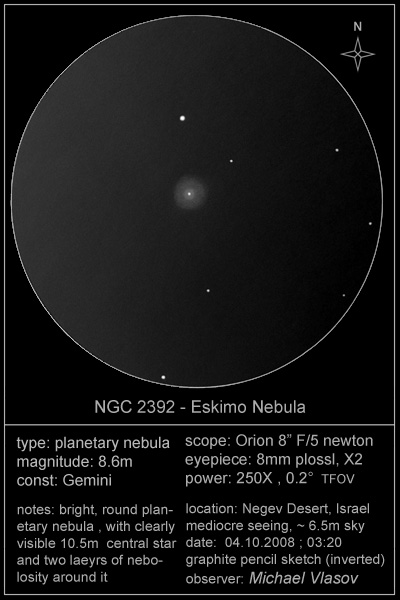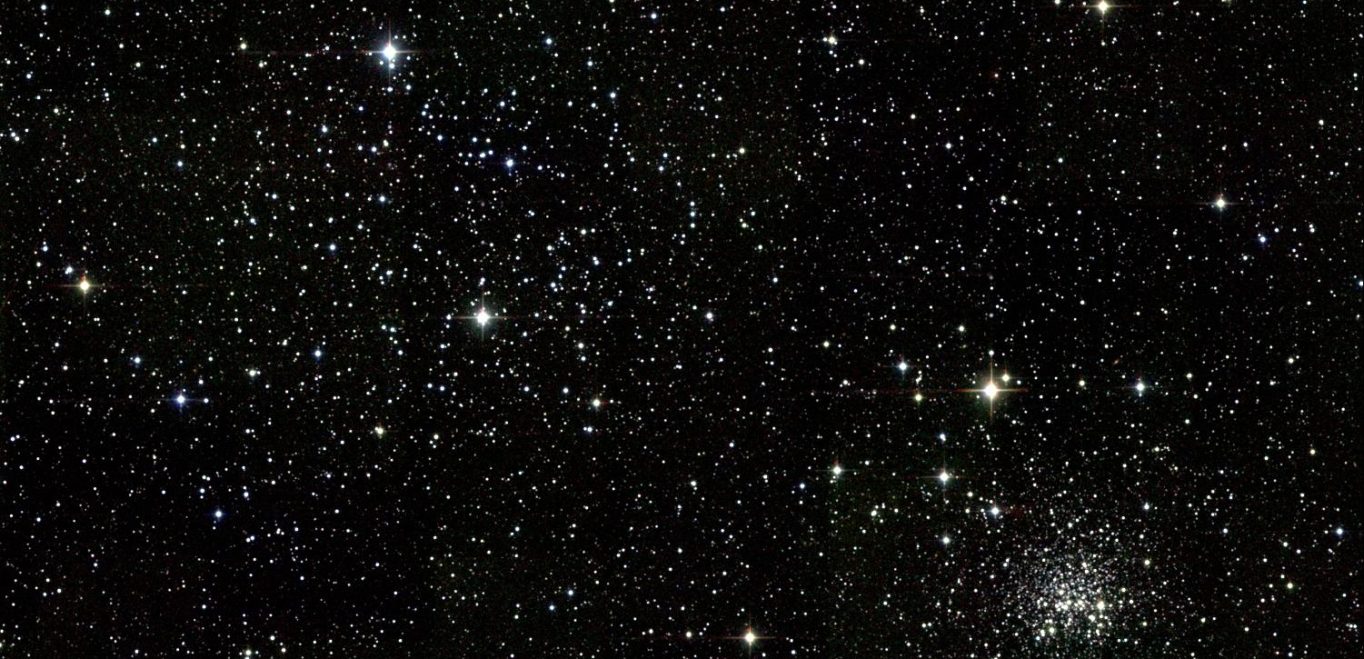Welcome to this month’s update to what’s in the night sky for February.
In the Elan Valley International Dark Sky Park, darkness falls at around 6.58pm at the beginning of the month and 7.44pm at the end.
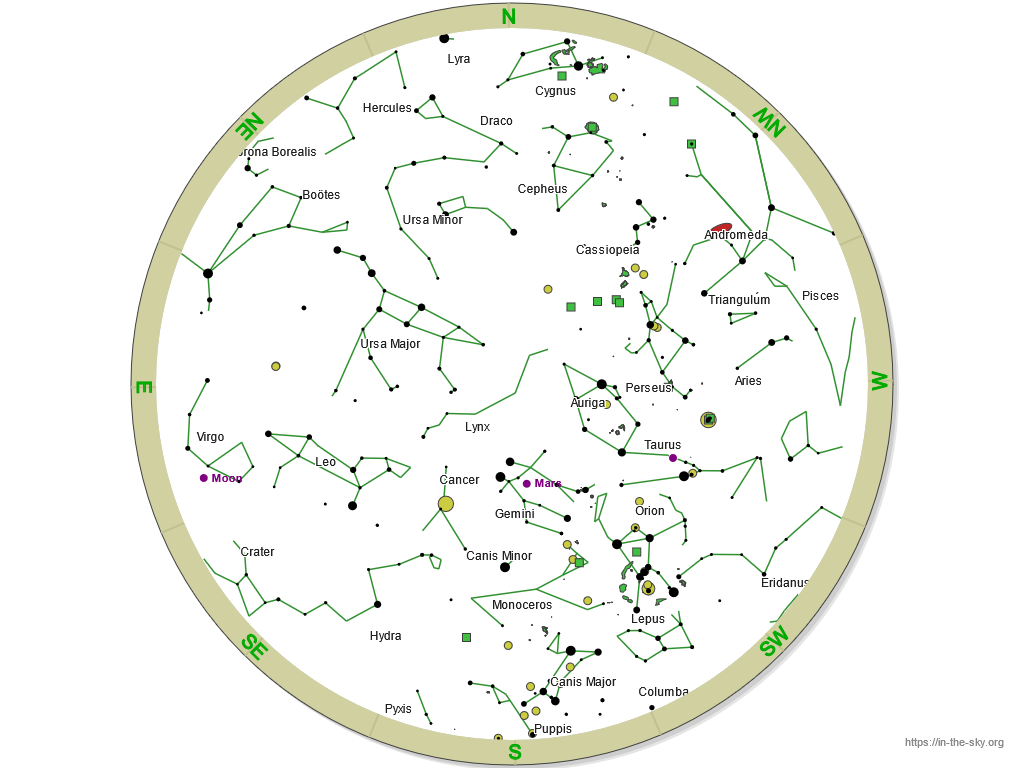
An all-sky view of the constellations from 10pm in February from in-the-sky.org
Facing south at 10pm, you will see the constellations of Gemini, Cancer and Canis Major. The mighty Orion and the other winter constellations of Auriga, Taurus, and Lepus move into the south-west making room for the spring constellations of Leo, Virgo and Boötes as they rise in the east. Ursa Major rises higher into the night sky during late winter/spring until it reaches the zenith during March and April.
The Full Moon occurs in 12th February and the New Moon on 28th February,
Constellation of the Month
Each month, we will feature a constellation and the mythology behind it. There are 88 IAU recognised constellations in the night sky and around 36 that are observable in the northern hemisphere. With the advent of science, critical and rational thinking, and more of a focus on the observable world, we do not use the night sky as an aid for the farming calendar, for navigation or conveying social or religious values. Some of the names of the 88 IAU recognised constellations are several thousands of years old. So, get outside and see if you can spot these constellations. The best time to see each constellation we feature is around 90 minutes after sunset.
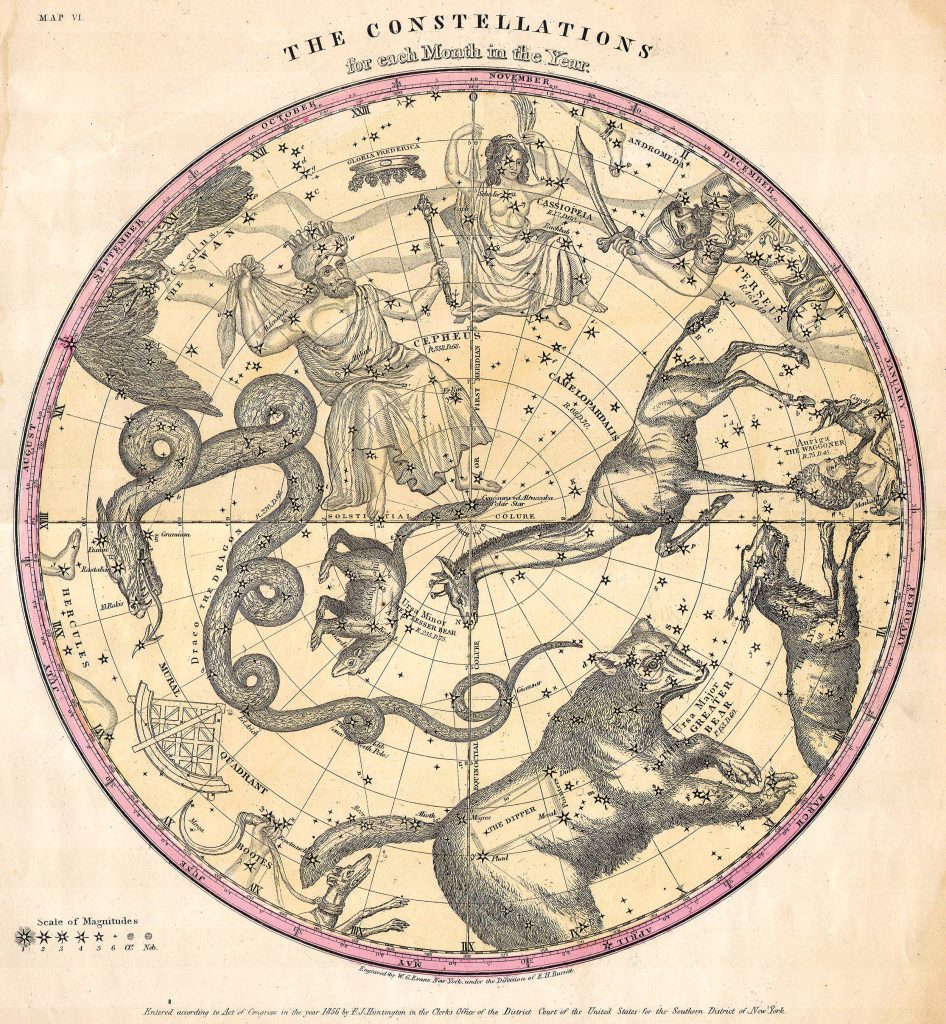
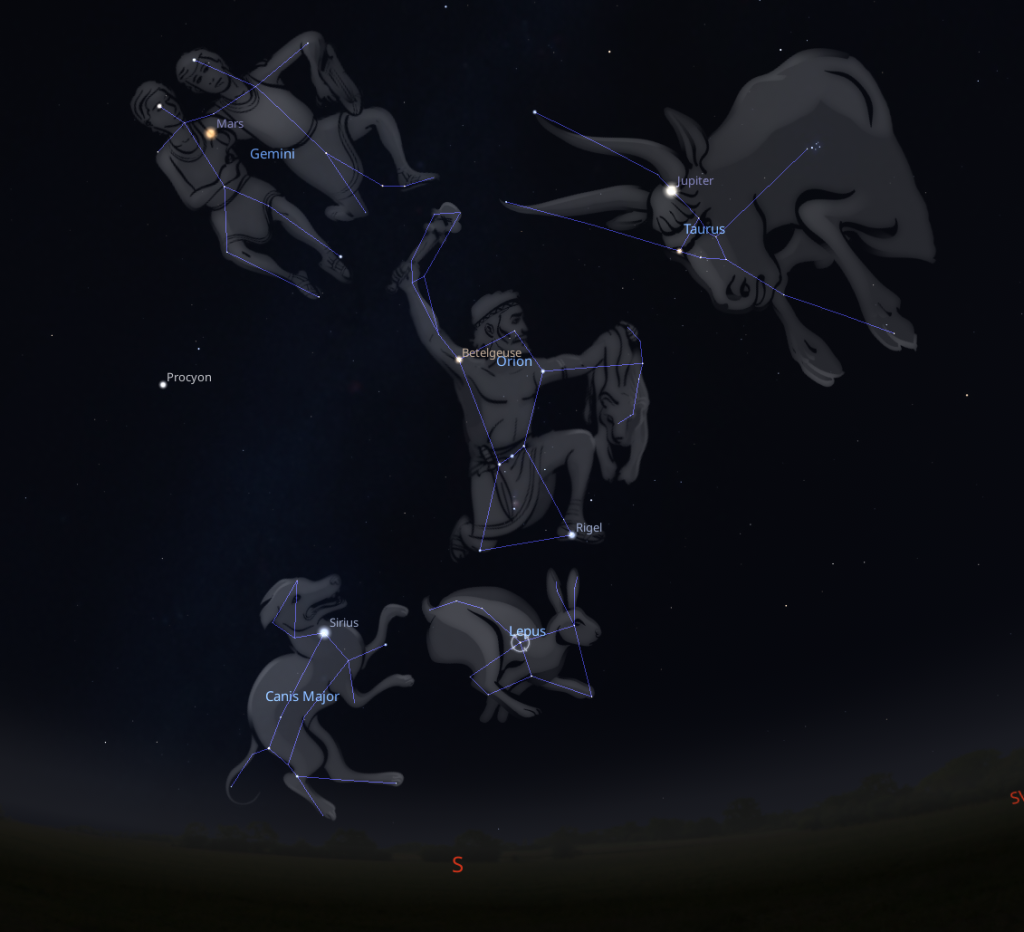
This month, we will look at the constellation of Gemini.
It is well placed in the south during the month of February.
This constellation lies to the north-east of Orion and can be easily found by spotting the two stars Castor and Pollux, which are situated next to each other.
In dark skies, you should be able to make out their bodies, resembling stick figures.
In Greek mythology, this constellation represented the twins Castor and Pollux, who were inseparable and were known as ‘the Dioscuri’, which means ‘the sons of Zeus’. As with all figures in Greek Mythology, they were famed for feats of great strength and many skills. They were known to have accompanied Jason and the Argonauts on his famous voyage to seek the Golden Fleece. One day, Castor was killed in battle. Pollux, who could not be consoled over the death of his beloved brother, asked Zeus to make Castor immortal. Zeus granted his request on one condition: that Pollux would also become immortal and the brothers spend half their time on earth and the other half in the heavens. Pollux agreed to this and Zeus placed them in the stars.
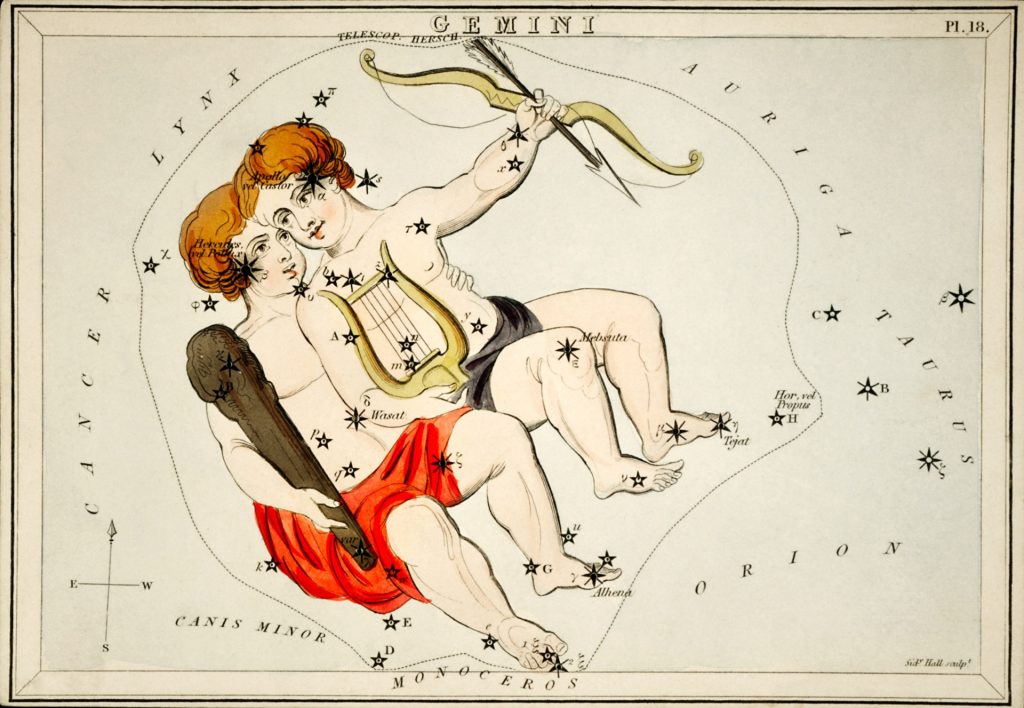
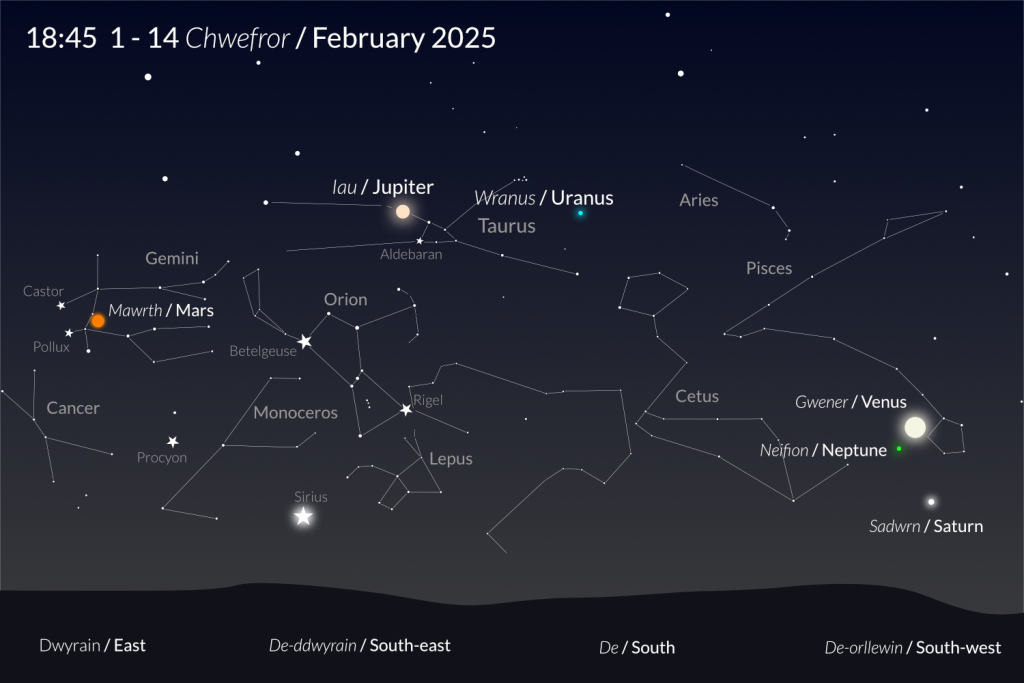
See Six Planets in One Night
Take the opportunity to find all six planets during the first two weeks of February.
At the beginning of the month, when darkness falls, Saturn is visible low in the West, followed by the very bright Venus. Neptune lies close to Venus and Uranus is well-placed in the south, next to Jupiter in the constellation of Taurus, with the Pleaides Star Cluster in between.
Mars completes the celestial procession, placed in the constellation of Gemini.
Saturn, Jupiter and Mars are visible with the unaided eye but a telescope, patience and dark skies are required to seek out the ice giants Uranus and Neptune. Although they both are around four times larger than Earth, they lie 2.8 billion and 4.5 billion km from Earth!
Through a telescope, Uranus will appear as a steady orb of aquamarine and the much more challenging Neptune as a star-like pinprick of blue.
To complete the hat trick of seeing all the planets in the Solar System, Mercury rises in the west in the evening towards the end of the month and becomes more prominent as an evening object from the last week of February, reaching greatest eastern elongation on 9th March.
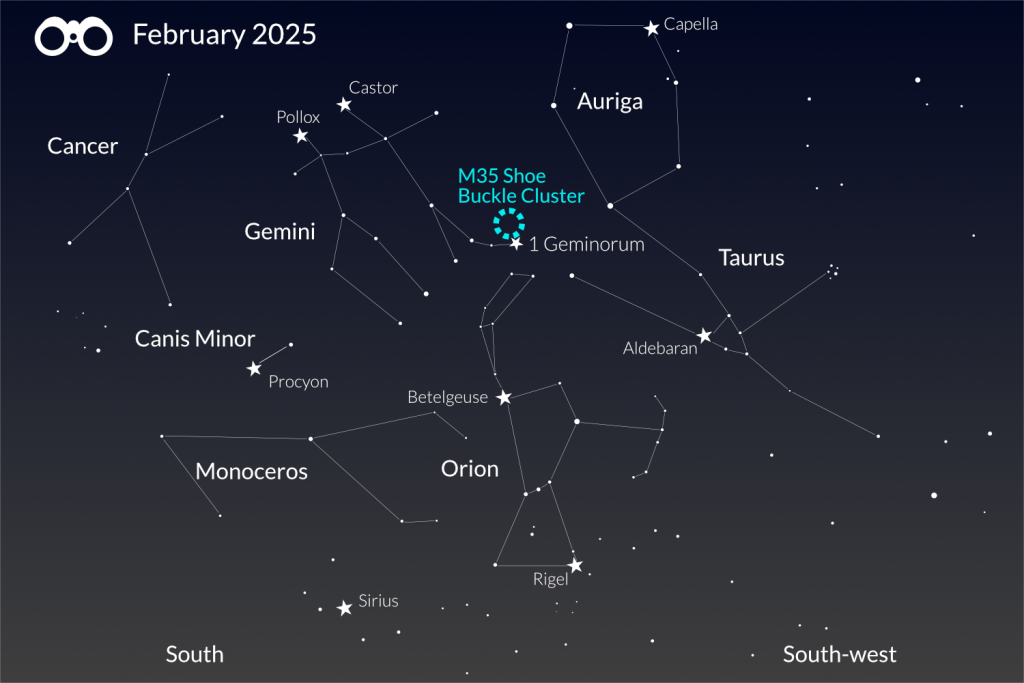
Shoebuckle Cluster (M35)
Right ascension: 06h 08m 54.0s
Declination: +24° 20′ 00″
Messier 35, or more commonly known as the Shoe Buckle Cluster, is an open cluster of stars that is situated on the left ‘foot’ of one of the twins in the constellation of Gemini. It lies 2,970 light years away and is about the size of the full Moon from our field-of-view perspective.
To find it with your binoculars, look for 1 Geminorum, or the left foot of Castor and slowly scan your binoculars eastwards if you cannot see it within the field of view.
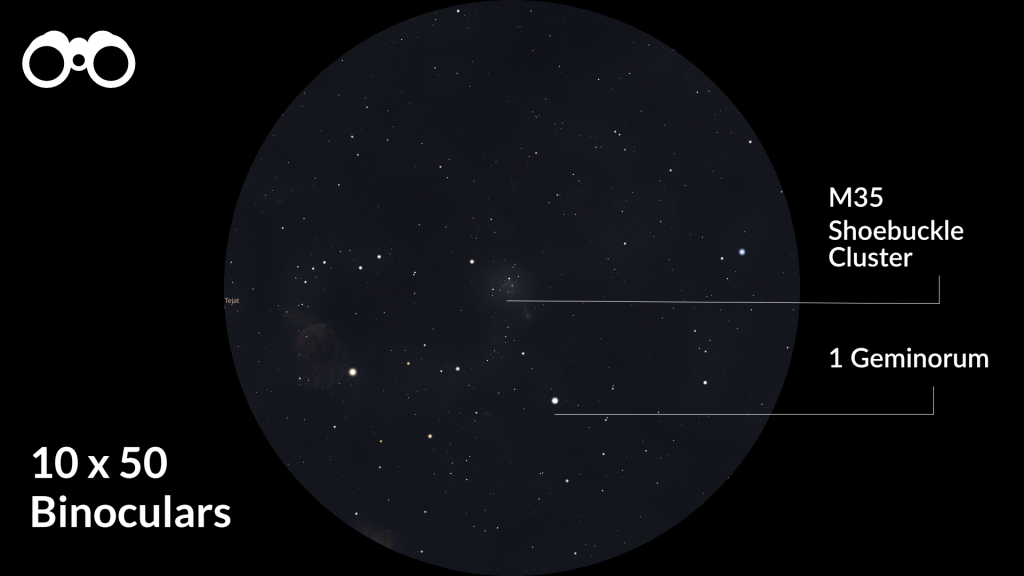
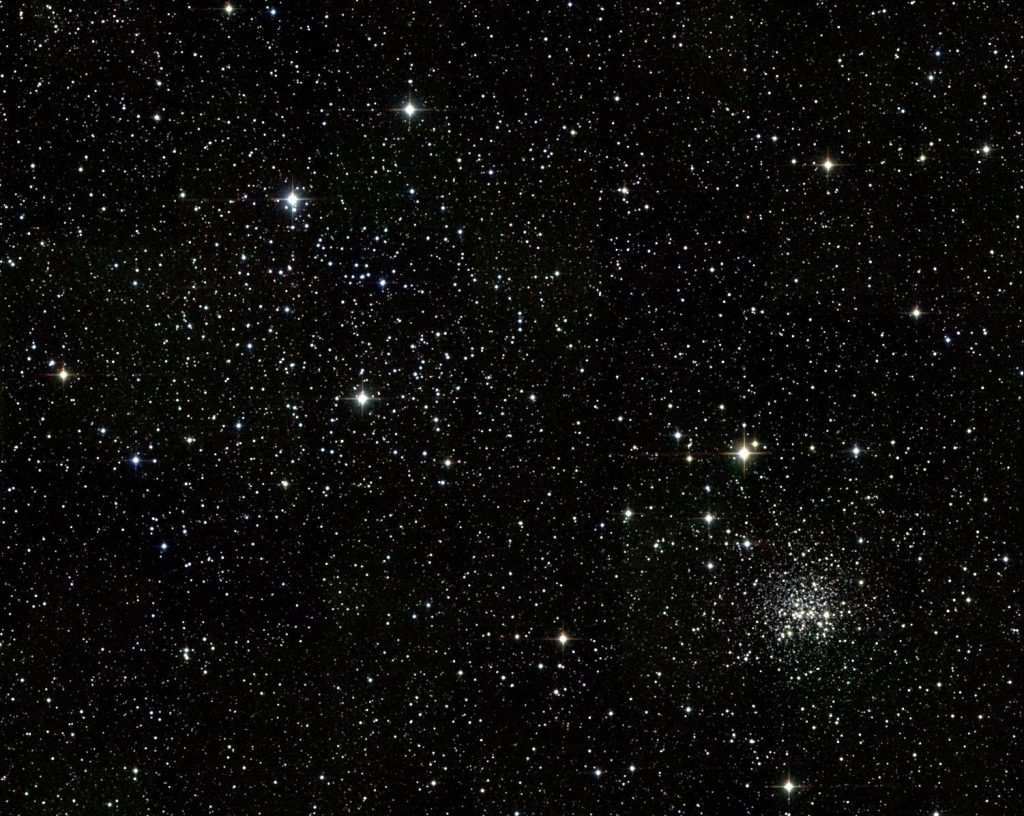
It was first discovered in 1745 by Swiss astronomer Philippe Loys de Chéseaux, who achieved much in his short life, including writing books on his observations and discoveries of comets and nebulae. He died at the age of 33.
Credit: Two Micron All Sky Survey (2MASS)
Lion Nebula (NGC 2392)
RA 7h 29m 11s | Dec +20° 54′ 42″
NGC 2392 was discovered by German William Herschel in 1787, an accomplished astronomer and composer. In brief, he was known for his discovery of the planet Uranus and its moons, theorised about the composition of nebulae and founded sidereal astronomy, he also catalogued over 2500 celestial objects and 9,000 stars, among many other achievements.
NGC 2392, known as the Lion Nebula or Clown Face Nebula, lies 6500 light years away in the constellation of Gemini and is a planetary nebula.

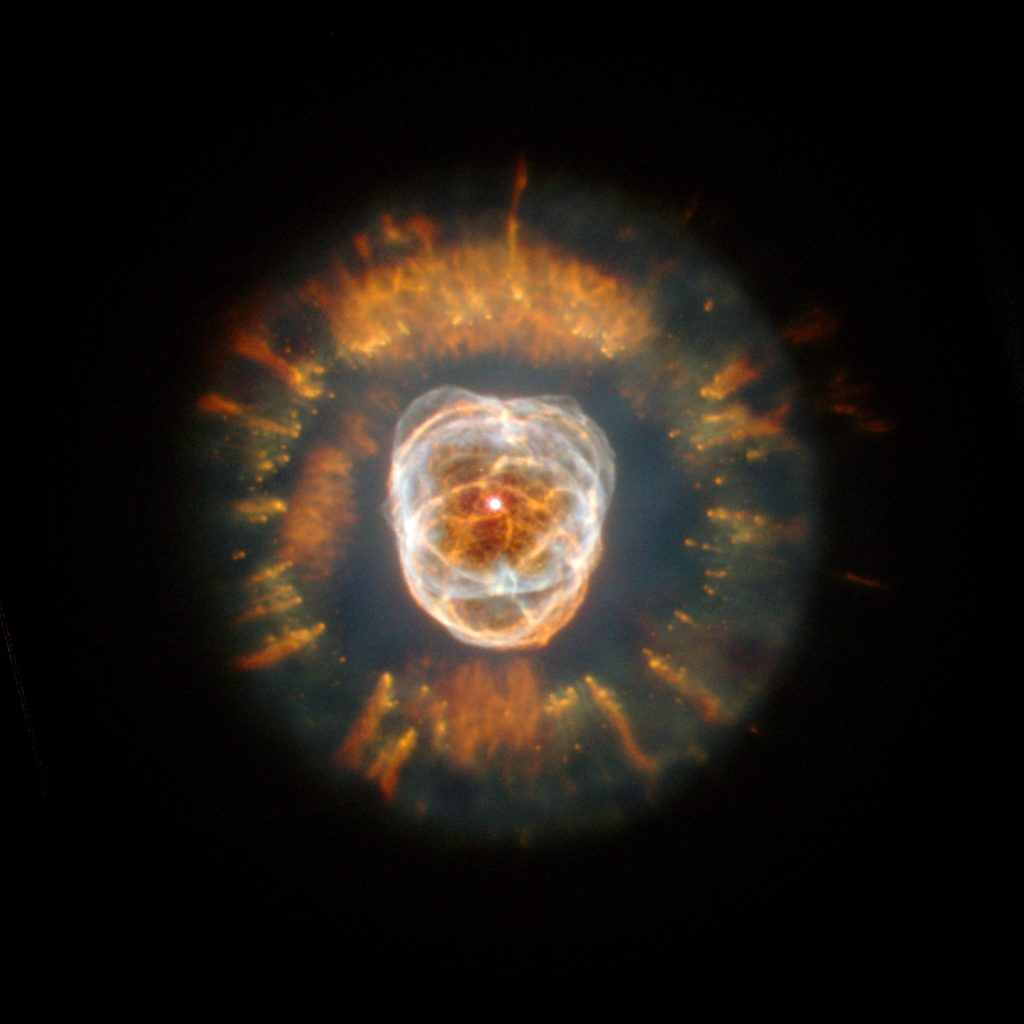
A planetary nebula occurs when an old, low mass star begins to run out of fuel; expanding into red giants and casting off its outer layers. As the core contracts, radiation is temporarily released, ionising those outer layers and causing them to glow. Our own sun is predicted to die this way; being of a relatively low mass. Stars 8 times greater in mass than our Sun will end their lives more dramatically; exploding as a supernova and forming nebulae – even larger stars collapse into a black hole.
Credit: ASA, ESA, Andrew Fruchter (STScI), and the ERO team (STScI + ST-ECF)
Through a small telescope, resembles a head surrounded by a mane of hazy light. A larger telescope may reveal a slight hint of filaments.
Credit: Michael Vlasov of Deep Sky Watch
